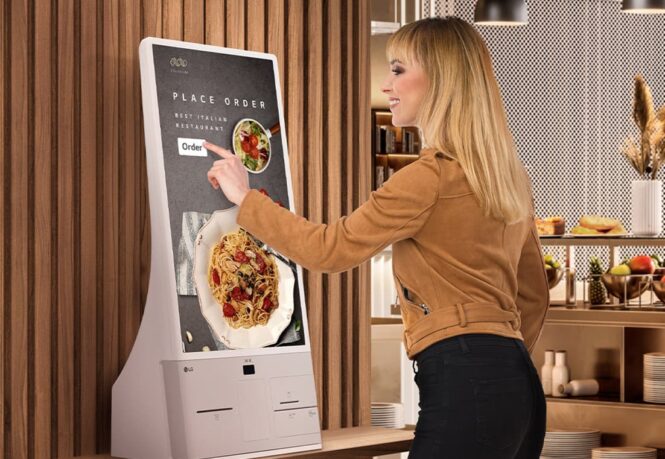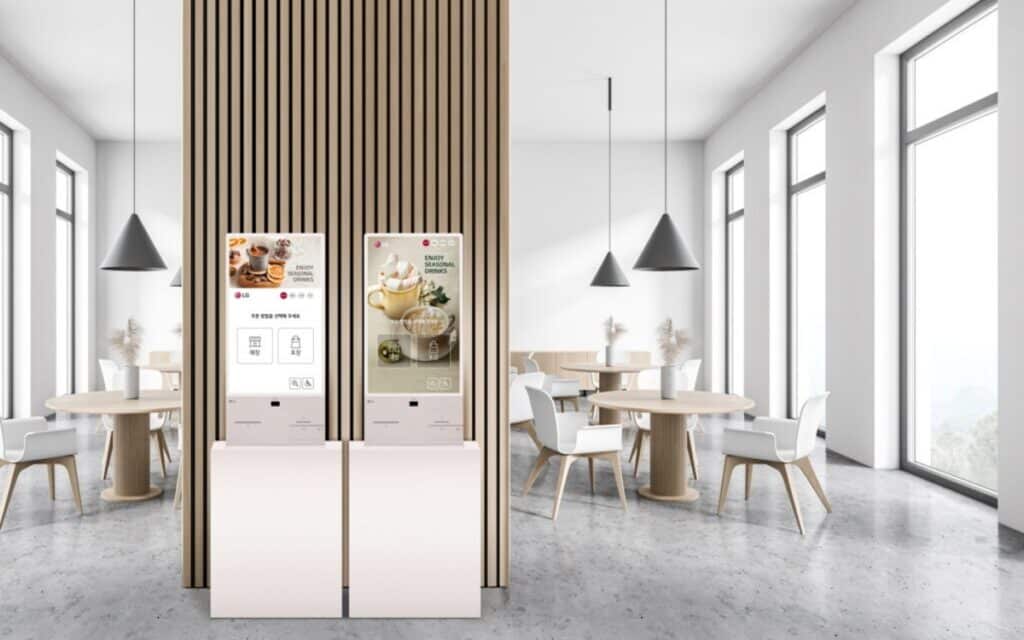
LG Kiosk News
Noted on Korea News
It was coming we all knew and here is some news on the LG Kiosk for restaurants. Will be launched first in the Korean home market and later in Europe and North America, likely by the end of the year. This unit is being shown all over the world right now (ISE in Barcelona example given). Here is our local information on the show and you can also visit the NRA portal page. LG will be attending the show in Chicago and for assistance with arranging a meeting with LG at the show email [email protected]
In Brief
- Will be launched first in the Korean home market and later in Europe and North America, likely by the end of the year.
- LG opted for 27″ touchscreen (Samsung is 24 for reference)
- Companies like Appetize and Elo tend to offer the 22 inch
- Energy efficient
- Windows IoT
- You can see the LG and Samsung at our booth at NRA (6576). We thought it was notable that Samsung went the Linux route. And the driving idea is the biggest item in any future capital budgets will be digital signs with the followup conversation of “what about kiosks?” question. McDonalds has 5 different suppliers and we wonder if they might be persuaded to aggregate those somewhat.
Excerpt
The company announced Tuesday that it will soon roll out a self-ordering kiosk system for restaurants and cafes in Korea, and plans to expand sales to overseas markets within the year.
The kiosk will have a 27-inch touchscreen, which is larger than the average kiosk touchscreens size of between 22 and 24 inches, according to LG Electronics.
The global kiosk market — which includes kiosks for self-ordering, ticketing and financial services — is forecast to grow 93 percent from $17.6 billion in 2020 to $34.0 billion in 2027, according to a Korea International Trade Association report released last April.
The report said that the self-ordering kiosk system market will grow faster than others, with an average annual growth rate of 12.2 percent.
From Sixteen:Nine
Sixteen:Nine content partner Invidis has a German language post up about how LG has followed the lead of Korean rival Samsung by developing and launching an all-in-one kiosk aimed at self-service applications.
The LG Kiosk, reports Invidis, will be launched first in the Korean home market and later in Europe and North America, likely by the end of the year. The all-in-one unit has a 27″ touchscreen, and supports ordering and payments via a card reader, QR/bar code scanner and receipt printer. There are options for NFC and voice-driven navigation, as well. The unit runs on Windows 10 IoT Enterprise, not LG WebOS, the operating system used for LG smart displays.
The product does not look wildly different from the Samsung kiosk, but there are distinctions. The big one is that OS. Samsung’s kiosk runs on its proprietary, Linux-derived Tizen OS, while LG is on the much more widely-used Windows. The screen is also larger, 27 inches versus Samsung’s 24-inch version.
From Invidis
LG Electronics introduces LG Kiosk, a new self-ordering kiosk to be launched first in its Korean home market and by the end of the year in Europe and North America. The all-in-one kiosk concept of the LG Kiosk (model name: 27KC3J) is equipped with a 27″ touchscreen as well as an order and payment function. Particularly important to LG is the 27″ InCell touchscreen, which is larger than the industry-standard 22/24″ displays. According to LG, the large screen should not only enable a better user experience, but also “make the use more fun and cool”.
The LG touch screen is based on Advanced In-Cell Touch (AIT) technology, where the touch sensor is embedded in the LCD cell. This technology allows for a better tactile feel, higher response times and, unlike touch overlays, a thin and light construction. Production is also more resource-efficient – LG received the Green Technology certification for reducing energy consumption for the manufacturing process of the AIT displays.
Lg Kiosk supports various payment methods by equipping it with an IC/MST card reader, receipt printer, QR/barcode scanner, etc. If required, customers can also choose additional functions such as NFC payment or a keyboard for voice menu navigation. Experience has shown that this is the challenge for kiosk systems, as market-specific payment modules certified by tax authorities are necessary in Europe and North America.






